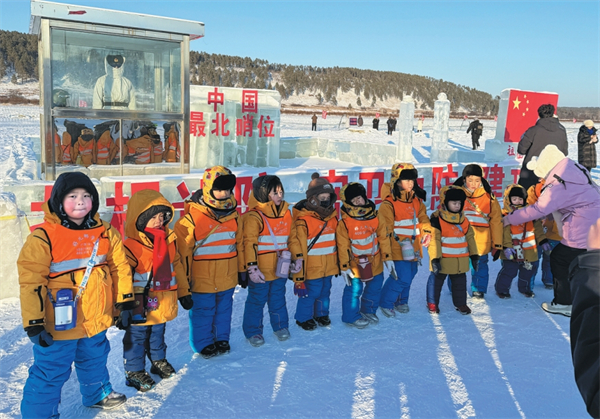Home>About Harbin
General Introduction
Updated : 2021-05-13
By ( chinadaily.com.cn )
Nature and Geography

The winters are long and summers are short, which is what earned Harbin its nickname, “Ice City in China.” The annual precipitation is 729.4 mm and the rain falls mainly between June and September with an annual frost-free period whichs lasts 150.4 days.
Located in the Songmen Plain, Harbin occupies 45.3 percent of the plain’s total area, with a cultivated area of 2,281,000 hectares (most of which is black soil with rich nutrients) where 63 species of various minerals have been found - 25 of which are proven resource reserves - with 36 county-level nature reserves (an area of 572,000 hectares), 12 of which are provincial-level. Within the reserves, there are 80 kinds of national first and second class protected animals and eight kinds of national first and second class protected plants.
Resources
Harbin has plentiful and numerous valuable natural resources with a concentration of planting and cultivating locations.
Harbin’s plant resources include: Korean pine, larch, Pinus ponderosa and Manchurian ash, the medicinal ingredients of ginseng, cork, earthworm, sophora and other valuable herbs like bracken, osmunda and monkey legs with wild vegetable dishes including pine nut and hazelnut oil, fruits like apricots, plums, prunus, pears, grapes and other berries are grown there. There are more than 130 species of wild flowers, including lilies and lilacs - which is Harbin’s official city flower.
Harbin’s wild animal resources include: Tiger, deer, white spoonbills and other nationally protected animals like white and black stork, white-tailed marten and 40 kinds of rare fish including carp, silver carp, dog fish and dace.
Harbin is also home to 20 kinds of minerals, including the major minerals in the Heilongjiang province such as coal, natural gas, copper, zinc, tungsten and molybdenum in Heilongjiang Province.
Local Specialty

The identified areas of green, pollution-free and organic food production (including the mountain products and aquatic areas) have exceeded 32.33 million mu. Brands including Wuchang Rice, Harbin Beer, Harbin Roulian Sausages, Harbin Hi-Tech Soybeans, Shuangcheng Millet, Longdsan Milk, Green Mountains Frozen Food, Yanshou Lychen Food and Zhenzhushan Food are some in a series of organic food producers have become reputable brands across China.
Harbin also has plenty of Hericium, fungi, mushrooms, Osmunda cinnamomea, ferns, hazelnuts, pine nuts and other mountain specialties which are easy to store after drying, salting and compressing and are sold overseas, touted as “Northern Delicacies in China.”

Harbin ramps up childcare services
A new comprehensive service center for childcare in Harbin is expected to be finished by the end of the year.
-
Talent policies drive enterprise development in Harbin
Harbin's "30 New Talent Policies" represents an iterative upgrade to the talent policy system, helping attract and retain talent to bolster economic and social development.
-
Official website of 2025 Asian Winter Games goes live
Harbin, the host city of the 9th Asian Winter Games, has announced that the official website for the 2025 event has recently gone live.
-
Harbin launches measures to facilitate more foreign trade
In the first three quarters of 2023, the total import and export value of Heilongjiang province's goods trade hit 218.22 billion yuan.





